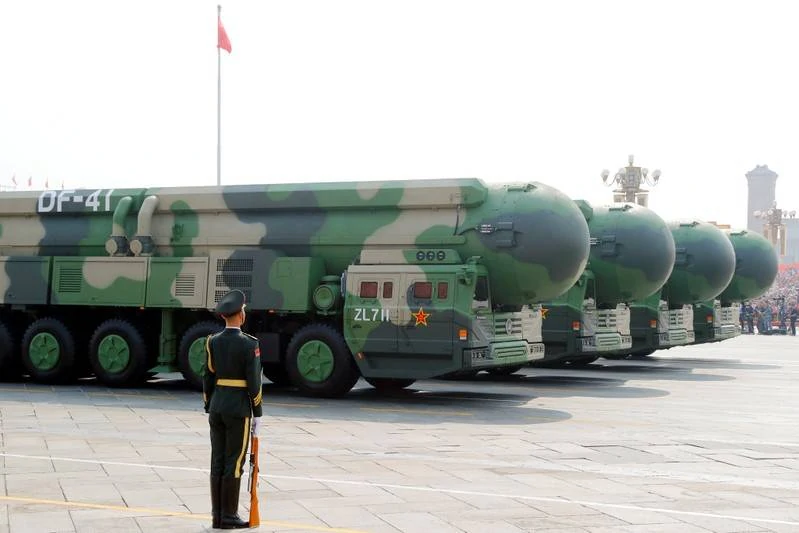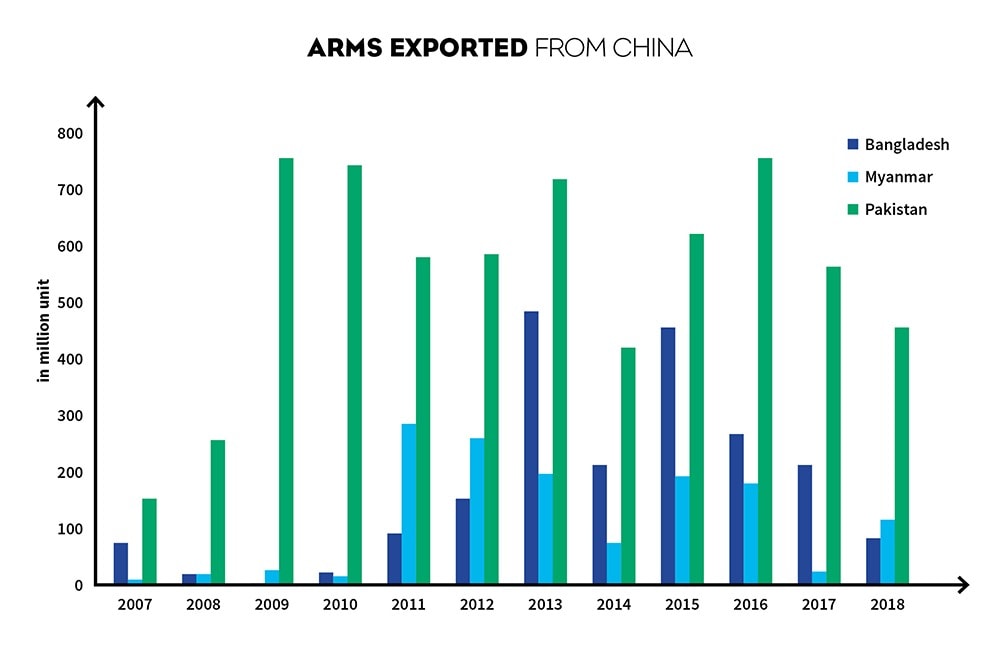China’s National Day Military Parade is a chance for the West to see what arms China has up its sleeves, and for China to use as a shop front for its new wares, writes Tom Pattinson
The lead up to the anniversary of the founding of the People’s Republic of China always gets the world’s military watchers excited. This year’s military parade, held for the country’s 70th anniversary, is expected to be the biggest yet with 15,000 military personal, 580 tanks, amphibious vehicles, missiles and drones, as well as 160 aircraft, all taking part. It is a chance for China to show off its latest weapons systems, as muscle to its smaller neighbours and as a shop front to its wealthier ones; and to keep the US on its toes by showing off a new bit of kit – the new hypersonic glide vehicle for example.
The October 1st procession is catnip to military watchers and weapons geeks around the world, who speculate on which new weapon system will be unveiled. Trawling through images of late-night parade rehearsals of trucks bringing missiles down Beijing’s Chang’an Avenue they work out – from the shapes, sizes and blurry photographs of what’s on show – what to expect.
This year one of China’s 18 DF-41 Intercontinental Ballistic Missile is expected to make an appearance. This, with the longest range of any missile on earth, is capable of carrying 10 independently targeted nuclear war heads and of hitting the US mainland within 30 minutes.
An upgrade to China’s main bomber the H-6N will also do a flyby showing off its new anti-ship DF-21 ballistic missiles. And both China’s DR-8 drone (able to travel five times the speed of sound) and the bat wing-shaped Sharp Sword Drone (with two internal bomb bays) are also expected to be on display.
There are also rumours of the DL-17 being given its first showing. This Hypersonic Glide Vehicle (HGV) travels at 3,800 mph at low altitudes with manoeuvrability to avoid enemy radar. With plans for its launch in 2020, it is thought it will be ready at least two years before America’s own HGV.
At the very end of September, days before the military parade in Beijing, China also launched its Type-075 class amphibious assault ship from a shipyard in Shanghai. These mini-aircraft carriers are used as helicopter landing docks and are designed for island or coastal assaults.
This Hypersonic Glide Vehicle (HGV) travels at 3,800 mph at low altitudes with manoeuvrability to avoid enemy radar
Many of these new bombers, drones and missiles are for naval warfare, specifically aimed at targeting aircraft carriers. Tensions in the South China Sea has seen Taiwan beef up its defences with a $2.2 billion deal with the US in June but China’s military spending continues to grow.
China’s defence spending last year increased 8.1 percent to $175 billion according to China’s Ministry of National Defence. The US Department of Defence predicts this to be nearer the $200 billion mark, whilst the Stockholm International Peace Research Institute (an independent resource on global security) puts the number at around $250 billion when research and development and foreign weapon procurement is included. And this amount is expected to increase by 7.5 percent again this year too.
China is also seeing is arms exports grow, particularly to countries along the Belt and Road in Asia, Africa and the Middle East. Pakistan, Bangladesh and Myanmar have been the biggest buyers of Chinese ammunition and all three are key players in the BRI.
According to SIPRI, China is now one of the major players in arms exports alongside the US, Russia, France and Germany.
“China is likely to continue expanding its arms exports, especially to partner countries… Arms exports provides an efficient, lower-cost way for China to both improve security in countries featuring major Chinese investments and to minimize spending and commitments by the PLA,” Timothy Heath, senior international defence researcher at California-based policy think tank RAND Corporation told CNBC.



